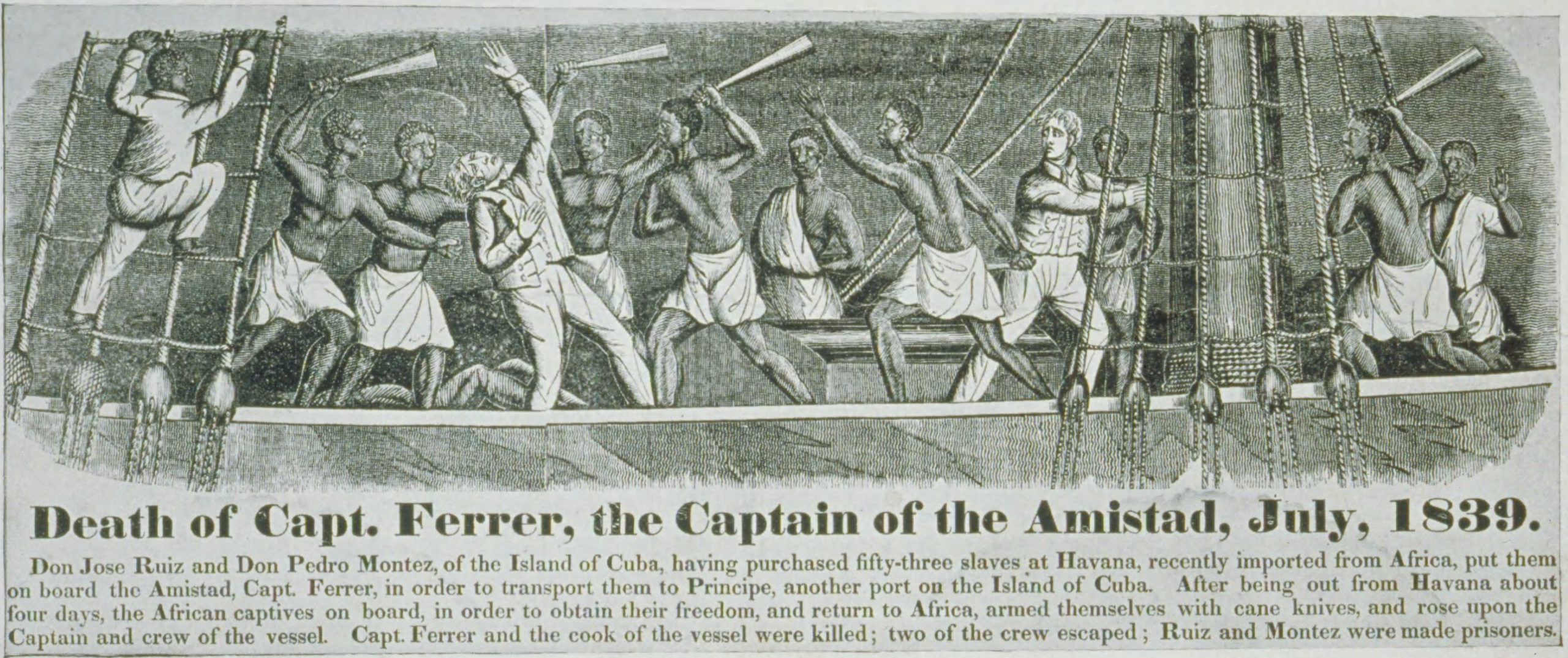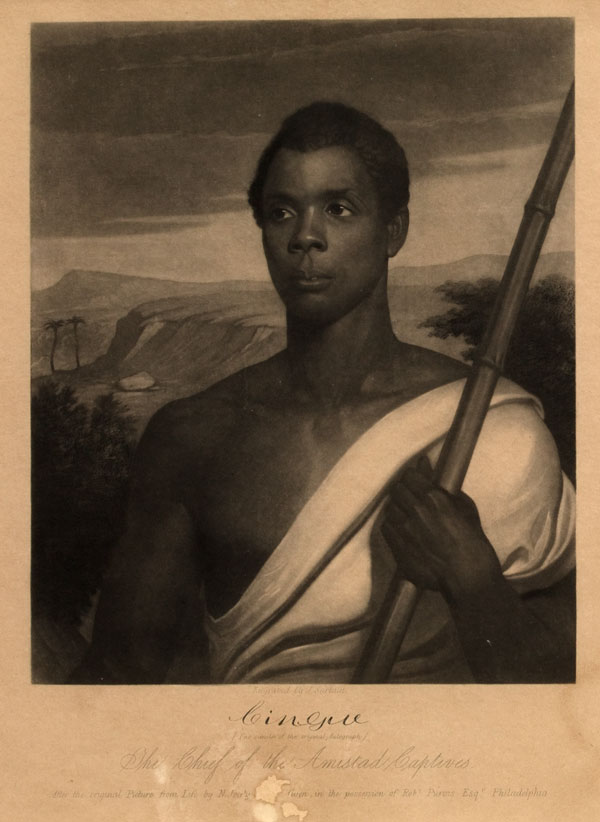(c) Connecticut Explored Inc. Winter 2019-2020
In 1840, all eyes were on Connecticut. Our state was at the center of an international court case about slavery and freedom.
The case began far away on the Caribbean island of Cuba. Cuba was then part of Spain. In 1839 a ship called La Amistad left Havana, Cuba. It was carrying 53 enslaved Africans—including four children.
The Africans had been captured in their homeland of Sierra Leone. They had been sold as slaves and taken to Cuba. Two Spanish men bought them to work on their plantation. Their plantation was in another part of Cuba. They would sail around the island to get there. It would take a few days.
While at sea, the Africans revolted. There was a violent struggle. The captain and the cook were killed. In the fighting, two Africans were killed, too. But the Africans were able to take control of the ship.
Their leader was Joseph Cinque. He ordered the crew to sail the ship back to Africa. They sailed east during the day. They could tell their direction by the location of the sun. But at night, the crew tricked the Africans and sailed north. The crew knew how to tell their direction at night by where the stars were in the sky.
They sailed for weeks. Finally they reached Long Island, New York. They needed fresh water and food. Some of the Africans went on shore but they were discovered.
Sailors from the USS Washington caught them and captured the ship. The plantation owners were set free. The Africans were put in jail, first in New London and then in New Haven and Hartford, Connecticut. The capture was reported on the front page of newspapers across the country.
Some Americans wanted to end slavery. They wanted to help the Africans. They wanted them to get a fair trial. The trial would decide if the Africans were free or the property of the plantation owners. It would also decide whether the Africans were guilty of murder.
The case took two years. Finally, the United States Supreme Court decided the Africans were free. They were not guilty of murder. They could finally go home. But how could they get there?
People in Farmington took them in until they could get home. Many people across the United States gave money. Finally, in November 1841, 35 of the Africans returned to Sierra Leone. It had been a very long journey.
Slavery in Connecticut was ended in 1848. It was ended in the United States in 1865. It took a civil war to end slavery in America.
Learn More!
Find this story at WhereILiveCT.org/the-amistad-captives-freedom-on-trial/.
Learn more about Joseph Cinque at WhereILiveCT.org/the-long-journey-of-sengbe-piehjoseph-cinque/.
Visit the Connecticut Freedom Trail website to learn about other important events in Connecticut’s African American history. CTFreedomTrail.org



